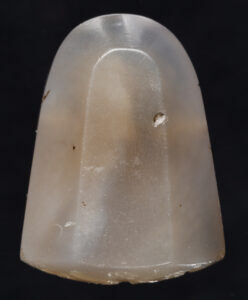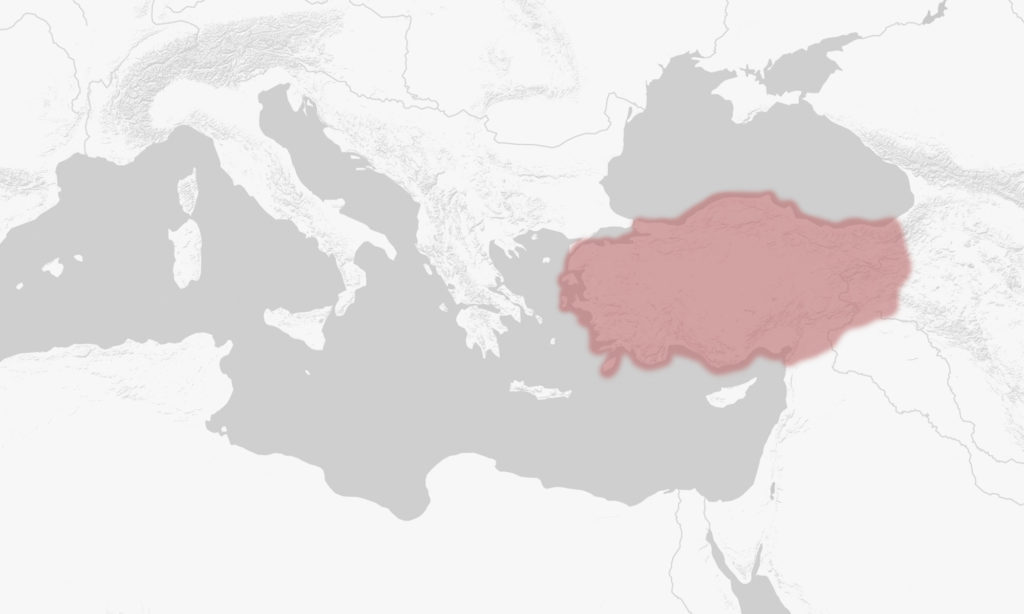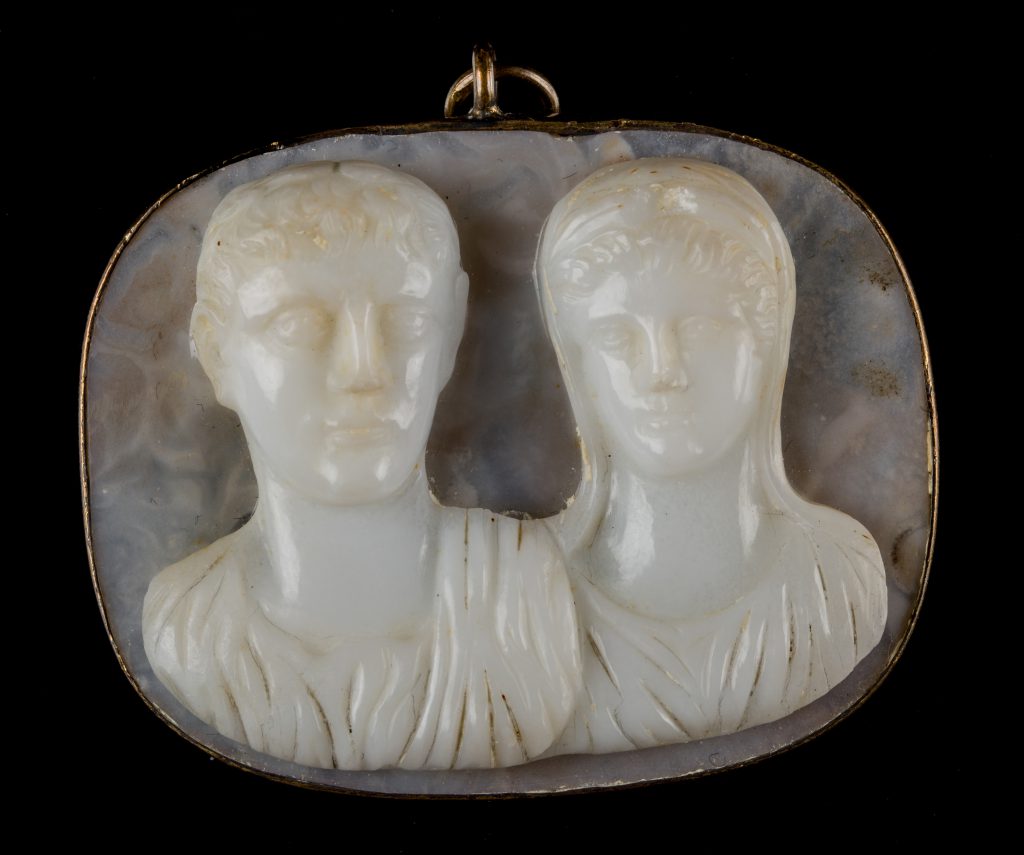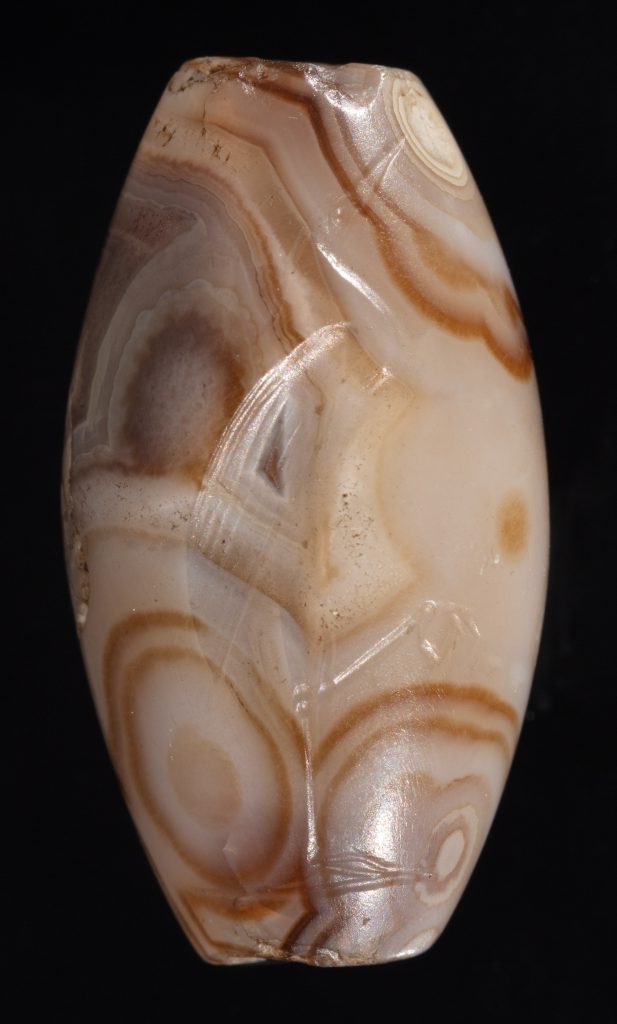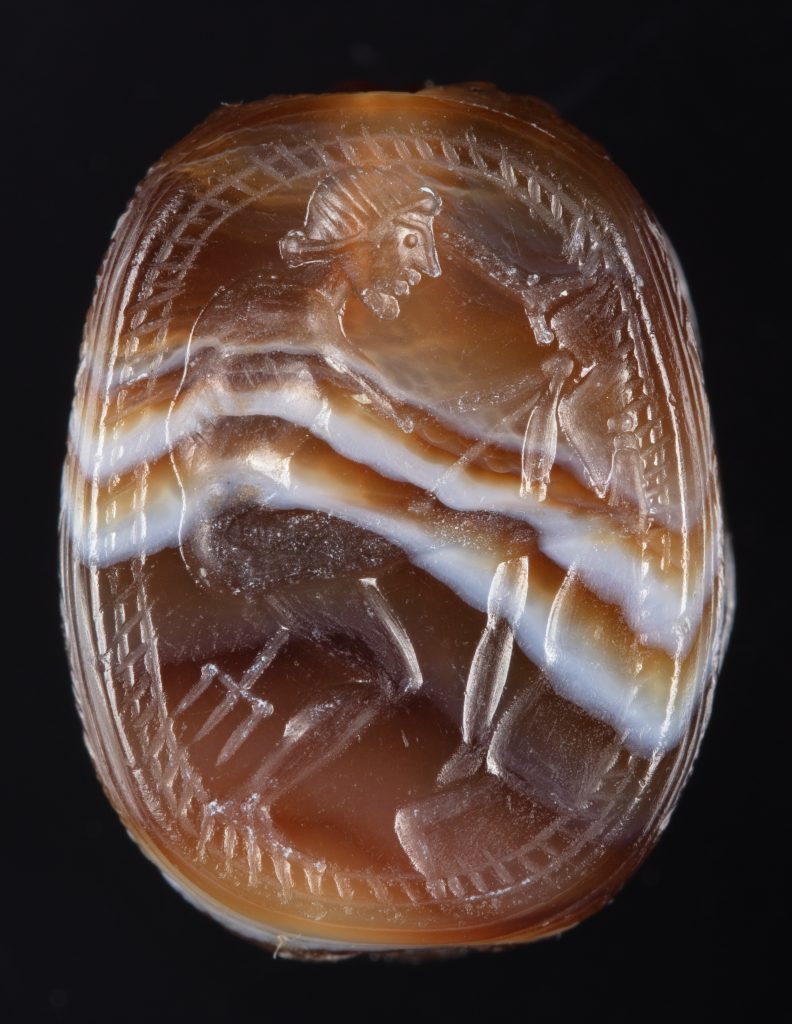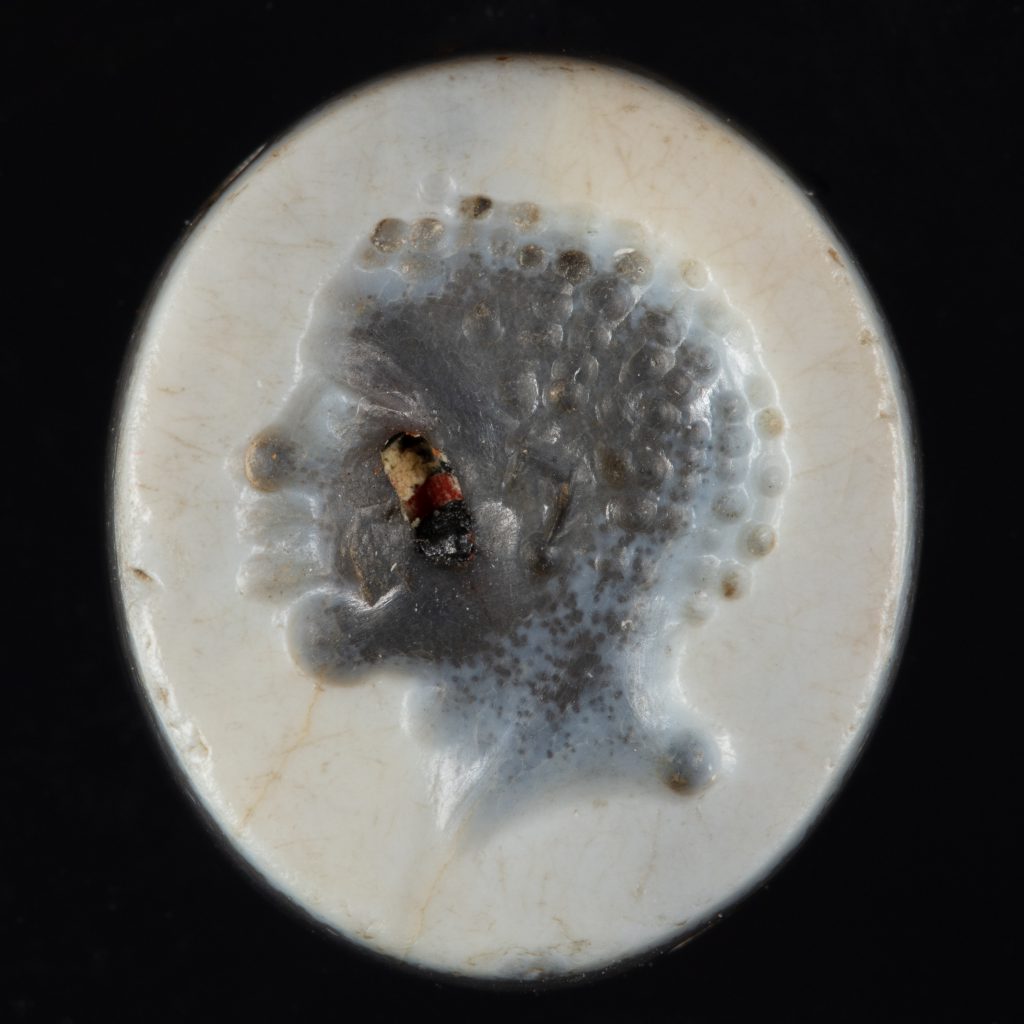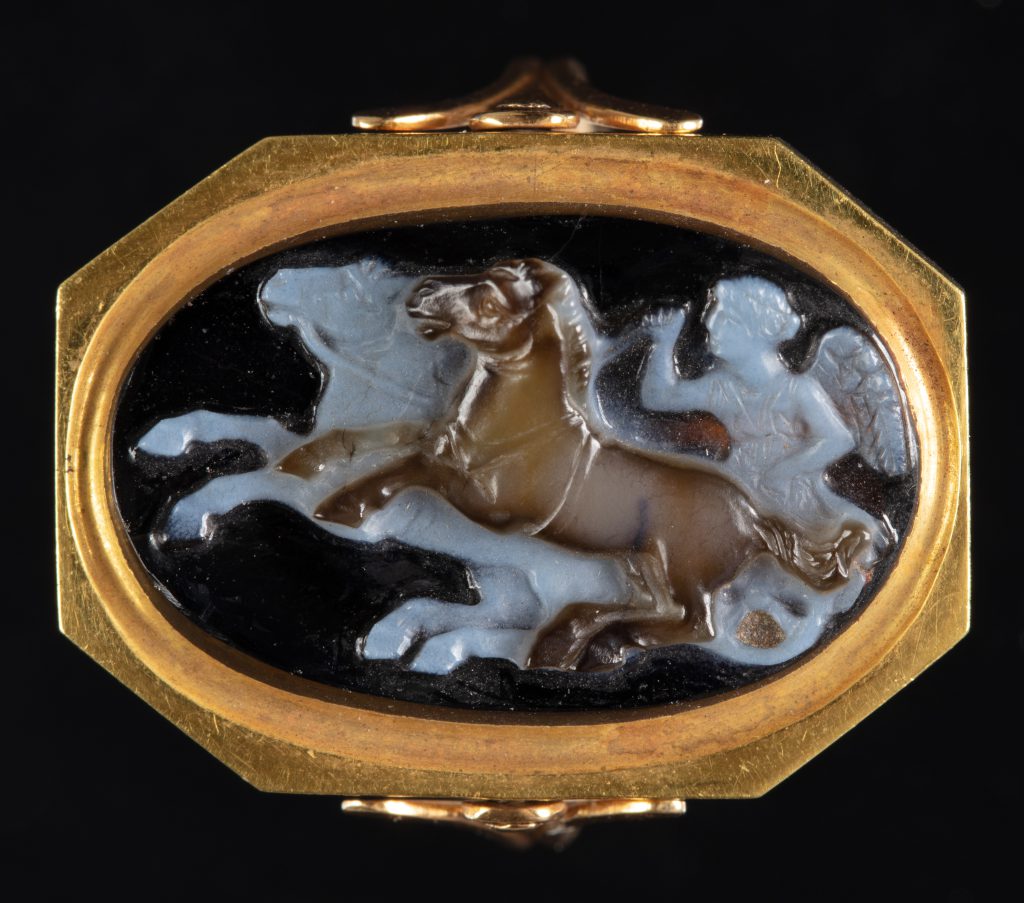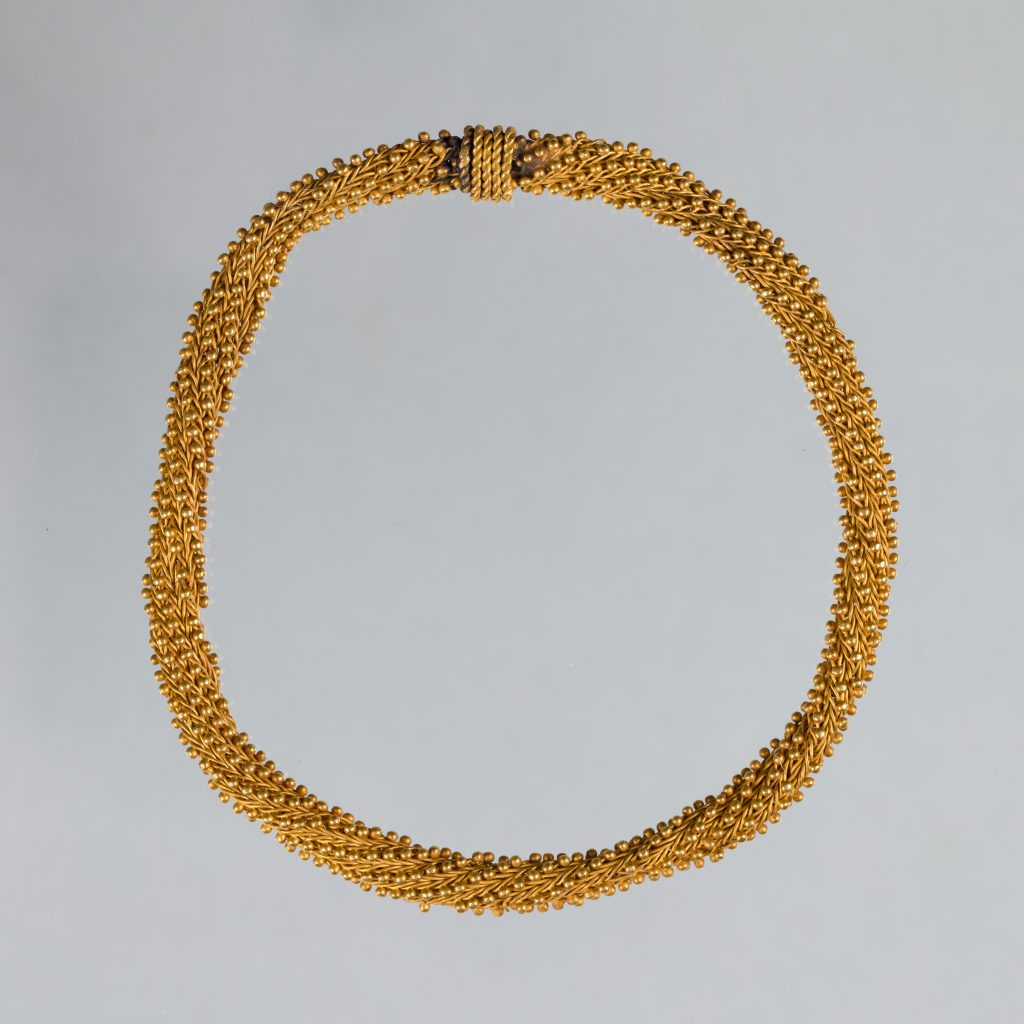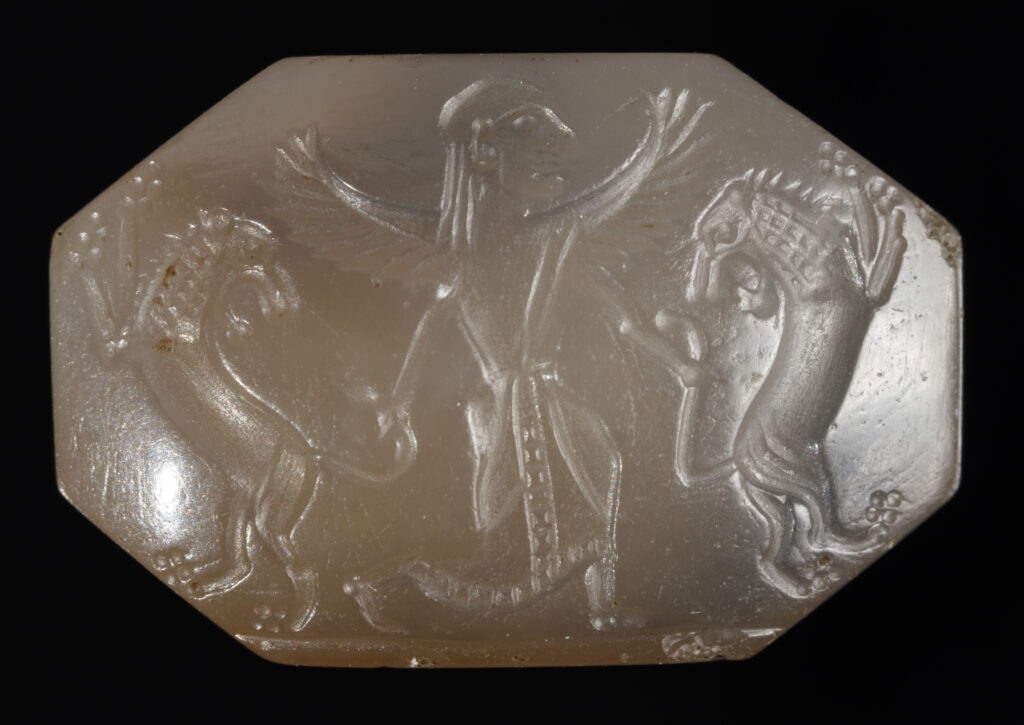
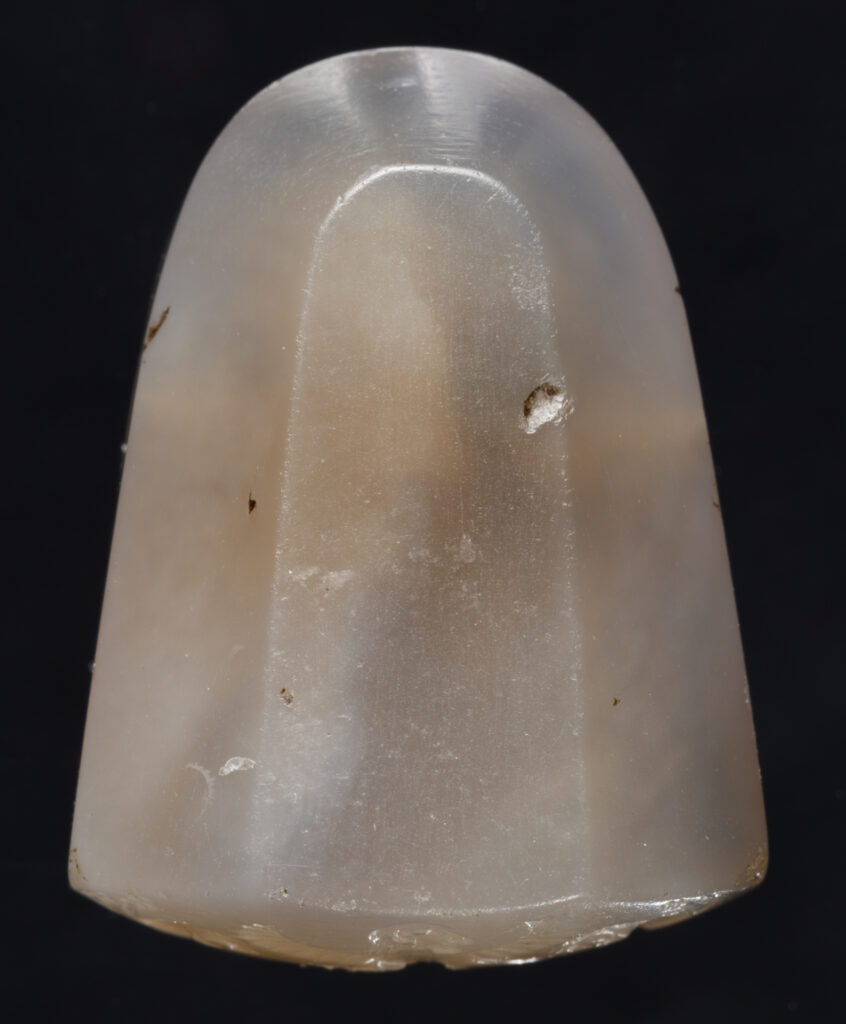

Gift of Edward Perry Warren, Esq., Honorary Degree 1926
1915.67This pyramidal stamp depicting Artemis fighting two lions exemplifies the interconnectivity of the ancient world. As a Greco-Persian gem, this object embodies the diffusion of cultural preferences and artistic traditions both through its iconography and its conical shape. The central figure of this seal is the winged Artemis, the Greek goddess of wild animals and the hunt, whose importance is indicated by her large scale. Her prowess is reflected in her command of the lions that flank her as she holds one tail in each hand. The lions stand on their hind legs with their heads turned over their shoulders to look back at Artemis with gaping maw.
This scene represents a fusion of Greek culture, here in the presence of Artemis, with the influence of eastern artistic traditions such as the inclusion of the lions. Across the ancient Near East, gods and kings were frequently depicted hunting or battling lions, a motif meant to illustrate their supremacy and superiority over the fierce beasts. Additionally, the eastern preference for antithetical composition contributes to the characterization of this scene as balanced, symmetrical, and static.
The eight-sided flat base of the chalcedony, upon which the scene has been carved, extends upward, narrowing at its peak. Instead of forming a pointed peak, the top of the stamp is softly curved like an arch, a shape unique to Greco-Persian gems.
While Warren’s collecting activities reflect a primary focus on antiquities produced in the Mediterranean Basin, he donated several exceptional objects that represent a broader definition and understanding of the ancient world. These include the Assyrian relief of the head of Ashurnasirpal II from Kalhu and the Assyrian chalcedony cylinder seal depicting a hero fighting a bull. Thus, Warren’s many complementary donations of gems, cameos, and jewelry underscore his interest in luxury items and the leisure culture of the ancient world.
Before 1915, collection of Edward Perry Warren; 1915, gifted to the Bowdoin College Museum of Art by Edward Perry Warren.
Collector
A testament to his impact as an influential twentieth-century American antiquities collector, Edward Perry Warren’s (1860–1928, H ’26) name is linked to hundreds of ancient objects housed in institutions across the United States, including more than five hundred works at the Bowdoin College Museum of Art alone.

